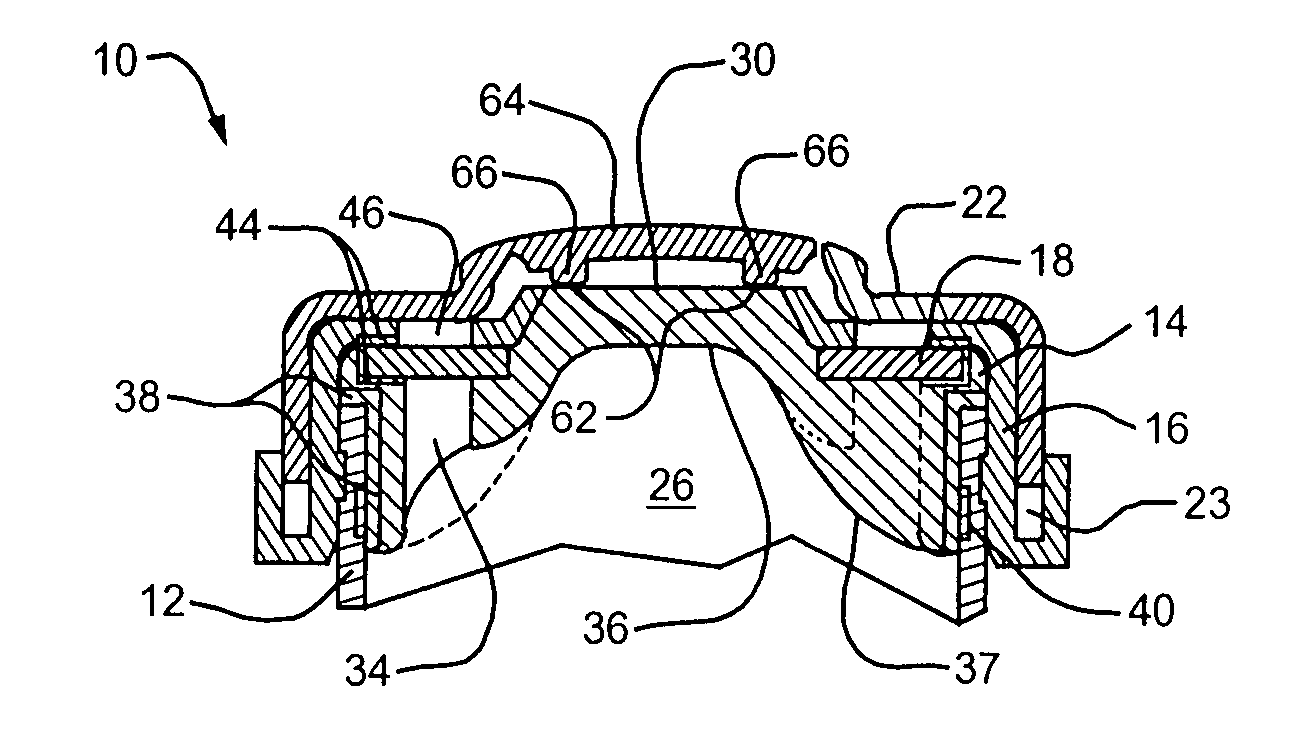Needle penetrable and laser resealable lyophilization device and related method
a lyophilization device and needle penetrating technology, applied in the field of lyophilizing, laser sealing, filling and dispensing of needles, can solve the problems of more defectively filled containers than otherwise desired, time-consuming filling process in combination with lyophilization process, and high cost of processes and equipment, so as to improve the ability to maintain sterility, reduce processing time and cost, and increase the assurance of sterility
- Summary
- Abstract
- Description
- Claims
- Application Information
AI Technical Summary
Benefits of technology
Problems solved by technology
Method used
Image
Examples
Embodiment Construction
[0039] Reference is now made to the accompanying figures for the purpose of describing, in detail, preferred aspects of the present disclosure. The figures and accompanying detailed description are provided as examples of the disclosed subject matter and are not intended to limit the scope thereof.
[0040] Referring to FIG. 1, a lyophilization device embodying the present invention is designated generally by reference numeral 10. The device 10 includes a body 12 defining therein a chamber for receiving the substance to be lyophilized, a needle penetrable and laser resealable portion or stopper 14 received within the open end of the body 12, a locking member or securing ring 16 for fixedly securing the stopper to the body, and a sterile filter 18 for allowing fluids to flow out of the chamber during lyophilization of the substance to be filled therein, and for substantially preventing any contaminants from entering the chamber from the exterior of the device. As described further belo...
PUM
 Login to View More
Login to View More Abstract
Description
Claims
Application Information
 Login to View More
Login to View More - R&D
- Intellectual Property
- Life Sciences
- Materials
- Tech Scout
- Unparalleled Data Quality
- Higher Quality Content
- 60% Fewer Hallucinations
Browse by: Latest US Patents, China's latest patents, Technical Efficacy Thesaurus, Application Domain, Technology Topic, Popular Technical Reports.
© 2025 PatSnap. All rights reserved.Legal|Privacy policy|Modern Slavery Act Transparency Statement|Sitemap|About US| Contact US: help@patsnap.com



